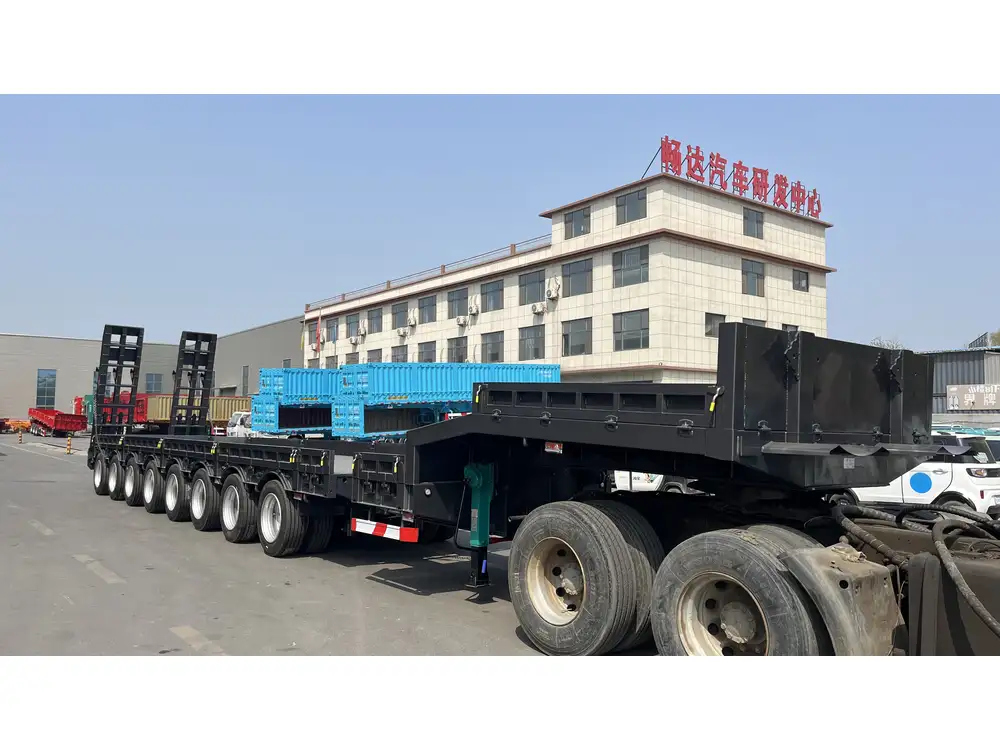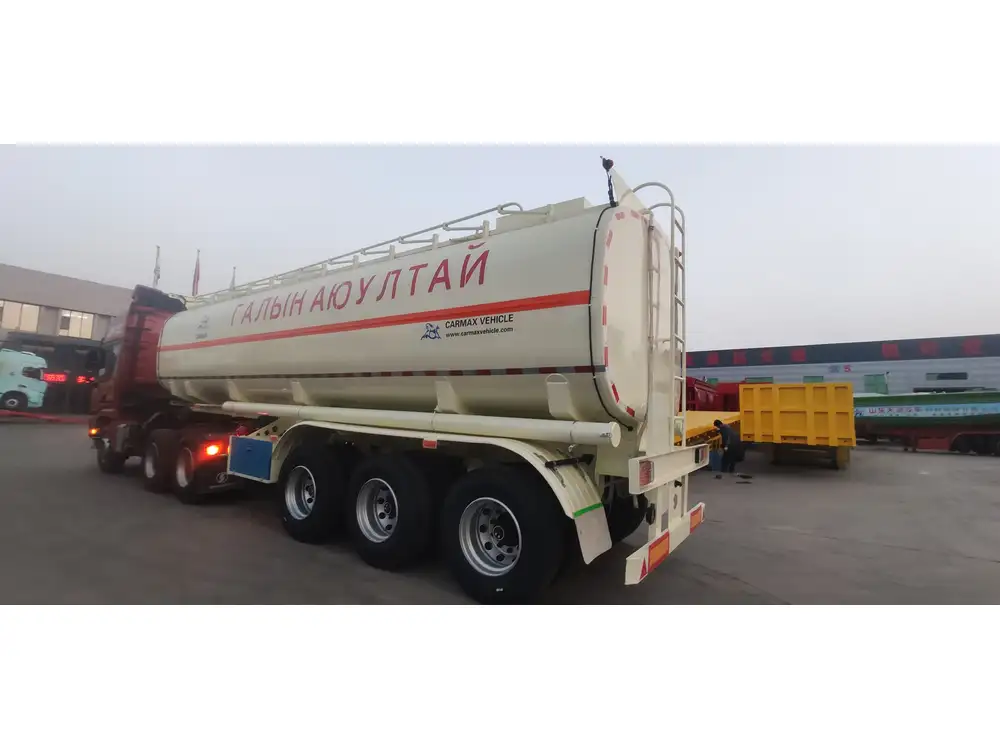When navigating the logistics of transporting liquid cargoes, understanding the fundamental aspects of tanker trailers—specifically their capacity—is vital. Often, the inquiry arises: How many gallons does a tanker trailer hold? Let us delve into the intricacies of this pivotal subject, ensuring that you have a comprehensive grasp of tanker trailer capacities, key considerations in their design, and the factors influencing their efficient utilization.
Tanker Trailer Capacity: The Basics
Tanker trailers are specialized vehicles designed to transport liquids, ranging from water and petroleum products to chemicals and food-grade materials. Their capacities can vary widely based on several factors, including design specifications, intended use, and regulatory standards.
Standard Capacity Ranges
To paint a clearer picture, let’s outline the general capacity ranges of common types of tanker trailers:
| Type of Tanker | Typical Volume (Gallons) | Typical Volume (Liters) |
|---|---|---|
| Petroleum Tanker | 5,000 – 11,600 gallons | 18,927 – 43,995 liters |
| Chemical Tanker | 5,000 – 8,000 gallons | 18,927 – 30,283 liters |
| Food-Grade Tanker | 5,000 – 7,000 gallons | 18,927 – 26,497 liters |
| Water Tanker | 3,000 – 6,000 gallons | 11,356 – 22,712 liters |
These ranges provide a foundational understanding, although the actual capacity can fluctuate based on design variations and regulatory constraints.

Relationship Between Gallons and Liters
For those accustomed to metric measurements, it’s crucial to recognize the conversion: 1 gallon = 3.78541 liters. Therefore, when assessing capacities, one can easily switch between gallons and liters based on regional preferences, ensuring clarity in communication.
Factors Influencing Tanker Trailer Capacity
Understanding how many gallons a tanker trailer holds is more than a number; it encompasses various design and operational factors:
1. Design Specifications
The physical dimensions of the tanker trailer—height, width, and length—directly influence capacity. For example, a standard 53-foot tanker trailer typically accommodates around 6,000 gallons of liquid, but modifications in length or shape may lead to changes in volume.

2. Regulatory Standards
Tanker trailers must comply with various safety and environmental regulations. The Department of Transportation (DOT) and the Environmental Protection Agency (EPA) impose specific standards that can limit the capacity and design of trailers, ensuring safety during transportation.
3. Intended Use of Trailer
Different applications warrant different designs. For instance, a petroleum tanker must withstand higher pressures and often has a different structure from a food-grade tanker, which must adhere to stringent cleanliness and safety regulations.
4. Material of Construction
Tanker trailers are typically constructed from materials like aluminum or stainless steel. The choice of material can influence both the weight and inner volume of the tanker. Aluminum trailers may be lighter but, depending on thickness, may offer slightly less internal capacity than their stainless steel counterparts.

Understanding Payload Capacity
While the internal volume of a tanker trailer is critical, equally important is its payload capacity, which combines the weight of the trailer itself and the liquid it carries.
Payload vs. Volume Capacity
| Capacity Measure | Description |
|---|---|
| Volume Capacity | Total gallons the tanker can hold. |
| Payload Capacity | Maximum weight including the tanker itself. |
For example, a tanker that can hold 6,000 gallons of water (approximately 50,000 lbs) might have a gross vehicle weight rating (GVWR) of 80,000 lbs. Thus, the payload capacity will reflect the weight of the empty trailer subtracted from this total.
Evaluating Liquid Material Types
Different materials will affect the effective capacity of tanker trailers. When determining how many gallons a tanker trailer holds, it’s vital to consider the specific gravity of the liquid it carries. For instance:

Liquid Type and Density
| Liquid | Density (lbs/gallon) | Impact on Capacity |
|---|---|---|
| Water | 8.34 | Standard measurement for calculations |
| Gasoline | 6.073 | Less weight, more gallons possible |
| Diesel Fuel | 7.1 | Moderate weight, moderate capacity |
| Liquid Chemicals | Varies (approx. 8+) | Can influence weight restriction |
By understanding the specific gravity, operators can optimize how much liquid they can legally and safely transport.
Safety Regulations and Compliance
Safety considerations in transporting liquids cannot be overstated. Compliance with various federal and state regulations is essential for any operator.
Hazardous Materials
If a tanker trailer is transporting hazardous materials, capacities and operational parameters will differ significantly. The Hazardous Materials Regulations (HMR) dictate stringent standards for the construction and operation of these transport units.

Best Practices for Safe Transport
- Routine Inspections: Ensure that all components, especially valves and seals, are thoroughly inspected before and after use.
- Training: Operators should undergo rigorous training, specifically tailored for handling emergency situations.
- Markings and Placards: Proper labeling is vital for compliance and safety, ensuring that all personnel are aware of potential hazards.
Conclusion: Choosing the Right Tanker Trailer
In sum, answering the question, how many gallons does a tanker trailer hold requires consideration of numerous variables, from design specifics to regulatory standards and the types of liquids being transported. As manufacturers of semi-trailers, it’s critical to offer products tailored to meet diverse industry needs while complying with regulations to ensure safety and efficiency.
Understanding the nuances of tanker trailer capacity aids in selection, operation, and adherence to safety protocols, ultimately enhancing the effectiveness of liquid transportation processes. If you aim to invest in a tanker trailer, consult with experts in the field and consider your operational requirements to make an informed decision.
Whether you are a transportation company, a logistics manager, or involved in the supply chain, being well-versed in the specifications and safety considerations of tanker trailers will empower you to navigate material transport challenges effectively. By prioritizing knowledge and compliance, you enhance not only business efficiency but also the safety of your entire operation.



